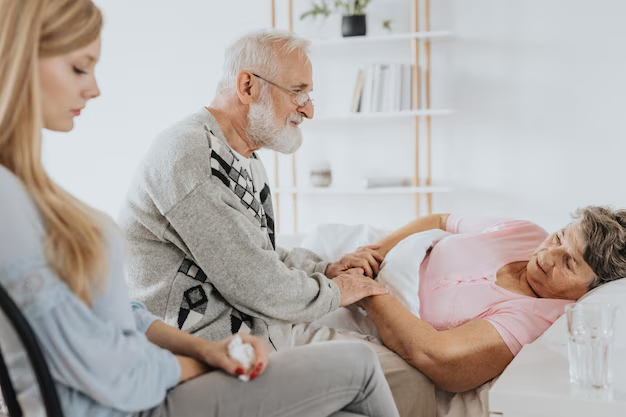Find Relief from Incontinence: Effective Strategies and Supportive Resources
For many, discussing incontinence isn't easy. This common issue, affecting millions worldwide, can lead to feelings of embarrassment and isolation. But incontinence doesn't have to dictate your life. Here, we explore practical ways to manage this condition and empower your journey to better health and financial security.
Understanding Incontinence
Incontinence occurs when you lose control over urination or bowel movement. The challenge could stem from various causes, including age, pregnancy, or underlying health issues. The types include stress, urge, overflow, and mixed incontinence, each requiring a different approach. Understanding the root of your incontinence is crucial for tailoring an effective solution.
Medical Treatments and Lifestyle Adjustments
Consult a Healthcare Professional: Your first step in managing incontinence is speaking to a doctor. They can provide a diagnosis, suggest treatments, and recommend lifestyle changes.
Pelvic Floor Exercises: Strengthening your pelvic muscles through Kegel exercises is a proven method to combat incontinence. These exercises can support bladder control and are a non-invasive way to manage symptoms.
Medications and Devices: Depending on the type of incontinence, a doctor may prescribe medications that can either strengthen the bladder muscles or calm an overactive bladder. In some cases, specialized devices or surgery might be considered.
Diet and Fluid Management: Limiting caffeine, alcohol, and spicy foods can reduce symptoms. Also, manage fluid intake by drinking smaller amounts throughout the day.
Absorbent Products: While managing incontinence, using high-quality absorbent pads or underwear can offer dignity and comfort in daily life.
Financial Assistance and Support Programs
Dealing with incontinence isn't limited to medical and lifestyle changes; it can also involve accessing resources that alleviate financial stress associated with treatment and management costs.
Disability and Low-Income Support
The government and non-profit organizations offer several programs to assist those with incontinence:
- Medicare and Medicaid: These programs can help cover the costs of doctor visits, treatments, and sometimes the necessary products related to incontinence.
- Social Security Disability Insurance (SSDI): If your incontinence is severe and affects your ability to work, you may qualify for SSDI, providing financial relief and resources.
- Supplemental Nutrition Assistance Program (SNAP): Dealing with medical expenses can stretch a budget thin. SNAP provides aid for purchasing nutritious food, crucial for managing incontinence-related dietary needs.
Educational and Community Resources
Support Groups: Joining a support group, either online or in-person, can provide emotional support and share valuable coping strategies.
Community Health Clinics: These clinics can offer low-cost or free services, including consultation and treatment for incontinence.
Educational Grants: For younger individuals facing incontinence, pursuing education can be financially assisted through grants. This could focus growth and offer new opportunities despite health challenges.
Credit and Debt Solutions
Taking control of your finances becomes critical when medical costs accumulate:
- Credit Counseling: This service provides guidance on managing debt and budgeting.
- Debt Relief Options: Programs exist to consolidate or forgive medical debt, which can profoundly alleviate stress while handling incontinence bills.
- Credit Card Solutions: Used wisely, credit cards can manage short-term expenses, but avoid high-interest options to protect financial health.
🌟 Financial and Educational Resources
- 🏥 Medicare: Health coverage for eligible seniors and young individuals with disabilities.
- 📘 Pell Grants: Financial assistance for low-income individuals pursuing higher education.
- 💼 Social Security Disability Insurance (SSDI): Benefits for those unable to work due to severe conditions.
- 🌐 Local Non-Profits: Community-based services providing product donations and emotional support.
- 📈 Credit Counseling: Professional advice to maintain financial stability despite medical costs.
Addressing incontinence involves a blend of medical guidance, lifestyle adjustments, and financial planning. By leveraging available resources, not only can you manage your symptoms more effectively, but you can also navigate the broader challenges this condition may present.

Related Topics
- a Patient You Are Caring For Uses Incontinence Briefs
- Are Incontinence Products Tax Deductible
- Are Incontinence Supplies Covered By Medicare
- Are Incontinence Supplies Tax Deductible
- Can a Bladder Infection Cause Urinary Incontinence
- Can a Kidney Stone Cause Incontinence
- Can a Urinary Tract Infection Cause Incontinence
- Can a Uti Cause Incontinence
- Can Constipation Cause Incontinence
- Can Constipation Cause Urinary Incontinence